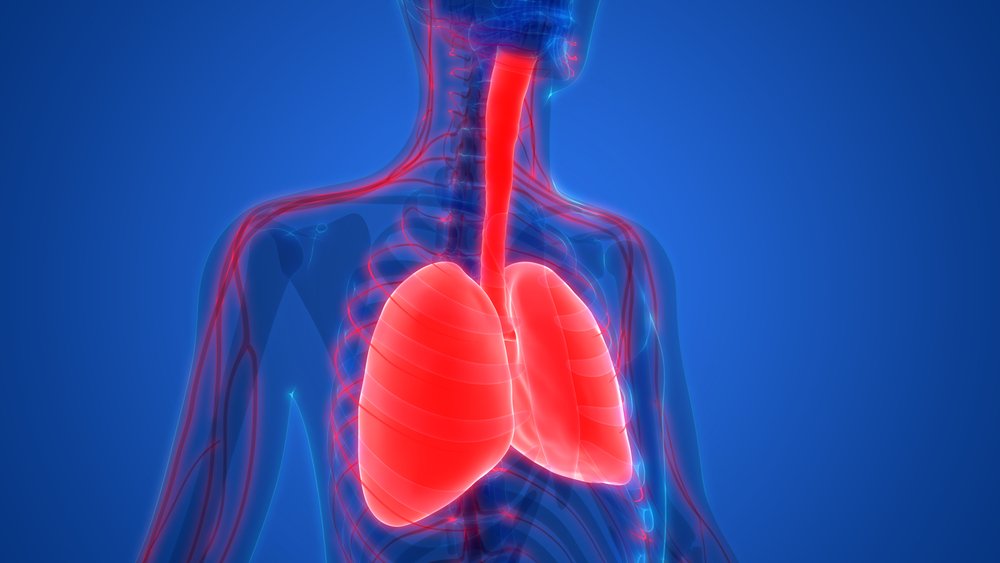Zephyr Endobronchial Valve Improves Breathing in Severe Emphysema, Study Finds

The Zephyr Endobronchial Valve, Pulmonx’s minimally invasive treatment for severe emphysema, was recently found to improve breathing, quality of life, and activity for patients in a U.S. clinical trial called LIBERATE. The treatment met all of the trial’s primary and secondary endpoints, or goals, after one year.
Emphysema is a severe form of chronic obstructive pulmonary disease (COPD). The Zephyr Endobronchial Valve is an investigational device in the U.S. and currently is not available on the market. The valves are designed for emphysema patients who are short of breath and do less of the activities they would normally do despite taking COPD medications or oxygen.
The one-way valves are placed in target airways of the lungs during a short procedure to block more damaged areas. The valves are designed to reduce hyperinflation and allow healthier areas of the lungs to take in more air. The procedure is permanent, but the valves can easily be removed if needed.
Results from the LIBERATE study (NCT01796392) were recently published in the American Journal of Respiratory and Critical Care Medicine in an article titled, “A Multicenter RCT of Zephyr Endobronchial Valve Treatment in Heterogeneous Emphysema (LIBERATE).” They also were presented at the 2018 American Thoracic Society (ATS) International Conference.
The LIBERATE study is the first randomized controlled trial in the U.S. to evaluate the effectiveness and safety of the Zephyr Endobronchial Valve for one year in patients with severe emphysema.
A total of 190 patients were enrolled in the study at 24 sites. Only patients with little to no collateral ventilation in the target lobe were enrolled.
After one year of treatment, almost three times more patients treated with the Zephyr valves achieved the target improvement in lung function — a 15 percent or greater increase in forced expiratory volume in one second (FEV1) — compared to patients receiving medical management alone (the control group).
Patients receiving Zephyr Valves were also able to do more daily activities with less shortness of breath than patients in the control group, namely walking and doing chores.
These patients also experienced a substantial reduction in the rate of respiratory failure, and researchers identified a trend toward a reduction in the rate of COPD hospitalizations when compared to the control group.
“The LIBERATE Study definitively proves that Zephyr Valves offer clinically meaningful improvements in three important areas for patients – the ability to breathe better, be more active, and enjoy an improved quality of life,” Gerard Criner, MD, the study’s lead investigator, said in a press release.
“All primary and secondary endpoints were met, with Zephyr Valve treatment showing significant improvement for patients across multiple measures of breathing and quality of life. The Zephyr Valve also demonstrated an acceptable safety profile given the magnitude of benefit seen in this study,” Criner added.
The most frequently observed side effect associated with the procedure was air leak in the lung (called pneumothorax), which occurred in about one-third of the patients. No intervention was required in approximately 20 percent of the incidents. Other less frequent side effects included COPD exacerbations, pneumonia, respiratory failure, and death.
“Bronchoscopic lung volume reduction with Zephyr EBV is a breakthrough approach for reducing hyperinflation in patients with severe emphysema,” the authors said. “The occurrence of pneumothorax does not negatively impact clinical outcomes,” they added.
The Zephyr valves are being tested worldwide, and to date, 12,000 patients have been treated with the minimally invasive device. The Zephyr valves have been included as a treatment option for emphysema in the treatment guidance issued by leading global health organizations including the U.K.’s National Institute for Health and Care Excellence (NICE) and the Global Initiative for Chronic Obstructive Lung Disease (GOLD).
An equivalent trial to LIBERATE is also being conducted in Europe, called TRANSFORM (NCT02022683). The European study enrolled 97 participants and is being conducted in Belgium, France, Germany, the Netherlands, Sweden, and the United Kingdom.





